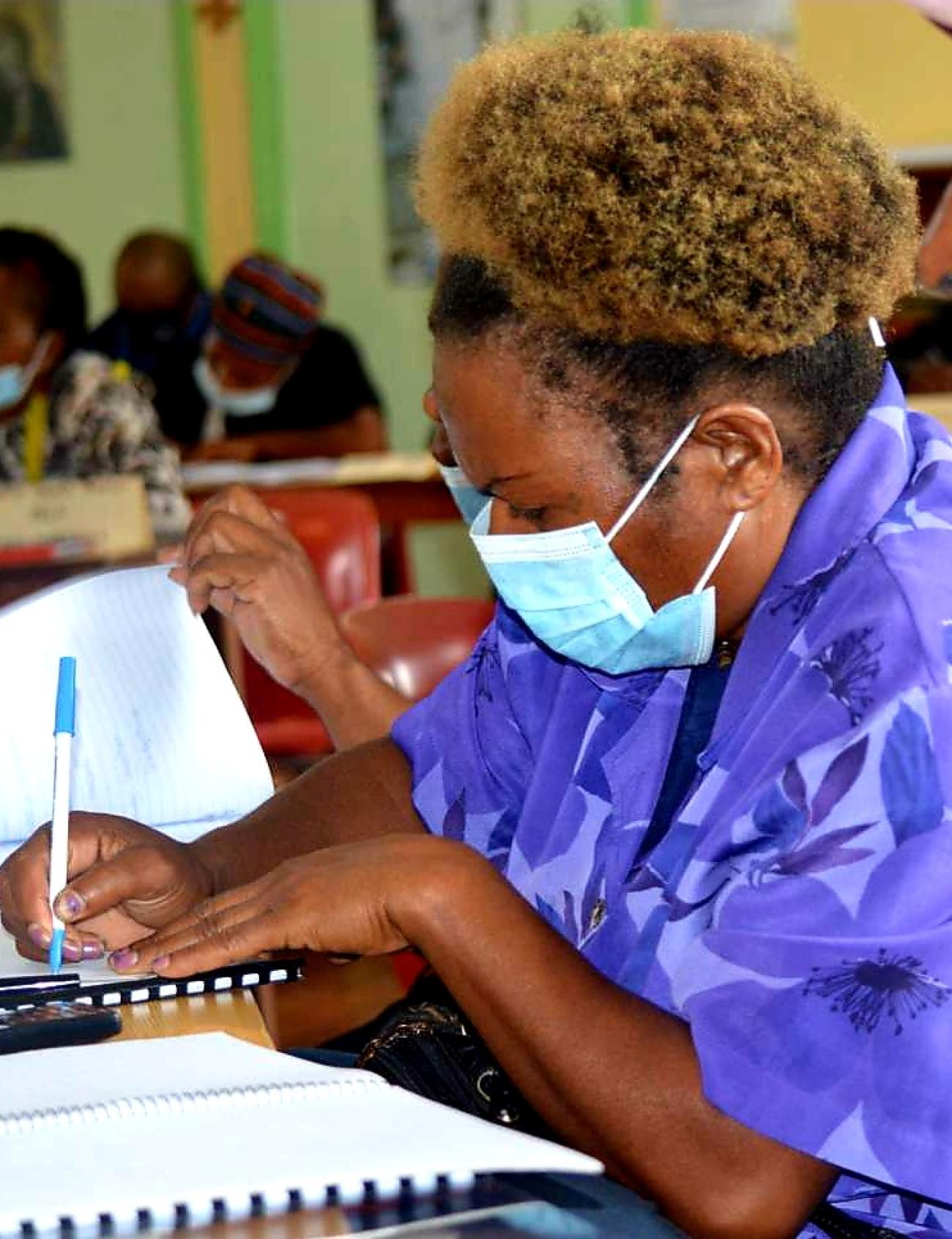IOM is delivering a 5-day training on Community-Based Disaster Risk Management (CBDRM) in PNG's Highlands region.
The International Organization for Migration (IOM) is delivering a 5-day training on Community-Based Disaster Risk Management (CBDRM) planning to representatives of Government (provincial and district) and at-risk communities of Hoiyabia, Puju and Yambraka (Hela) and Ekari (Southern Highlands).
Delivered in Mendi town and co-funded by the Hela Provincial Government and USAID’s Bureau for Humanitarian Assistance, the CBDRM training is empowering 21 participants (13M, 8F) with knowledge and strategies for strengthening community resilience to natural hazards.
Mr. John Kink, who is the Advisor to Southern Highlands Office of Disaster and Climate Change, is facilitating delivery of the training together with the IOM team. He expressed gratitude to IOM for taking the initiative to assist disaster affected and at-risk communities through providing technical support in developing the CBDRM plan and promoting their operationalization. “I thank IOM for encouraging us to implement CBDRM in the various vulnerable rural communities. This is one area we really need support and I believe it is the same for Hela.”
Hela and Southern Highlands are prone to various hazards such as flooding and landslides, and several communities have in the past experienced population displacement and destruction of property because of the impacts of natural hazards. IOM continues to work in partnership with the National and Provincial Disaster Centres to advance disaster risk reduction and management initiatives, reducing community vulnerability and promoting resilience at the local level.
Following the training, trained community representatives will receive technical support from IOM and government (provincial, district and local level) to work with members of their communities to develop, launch and implement their CBDRM plans.
IOM’s CBDRM programming in the Highlands is part of the UN’s Highlands Joint Programme. The CBDRM plans will incorporate the hazards, vulnerabilities and capacities of the respective communities taking into account the national and international plans and priorities including Papua New Guinea’s National Disaster Risk Reduction Framework (2017-2030).




